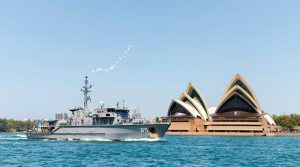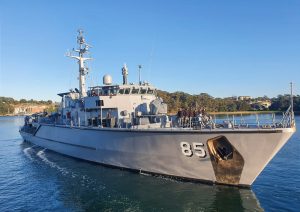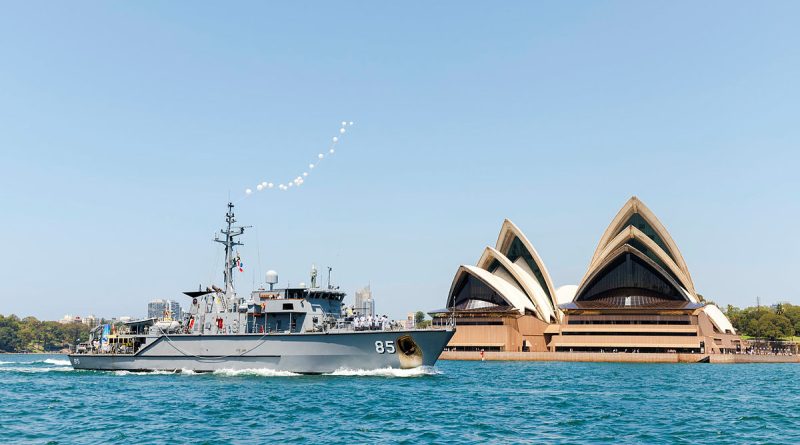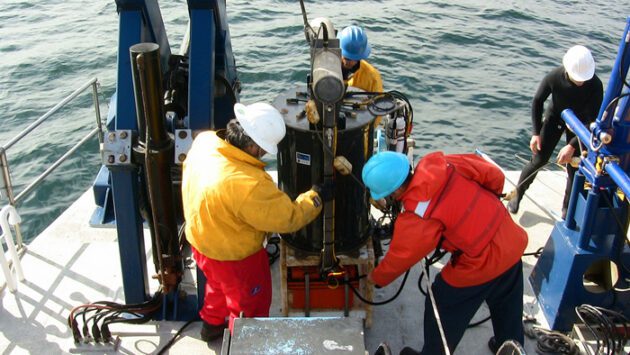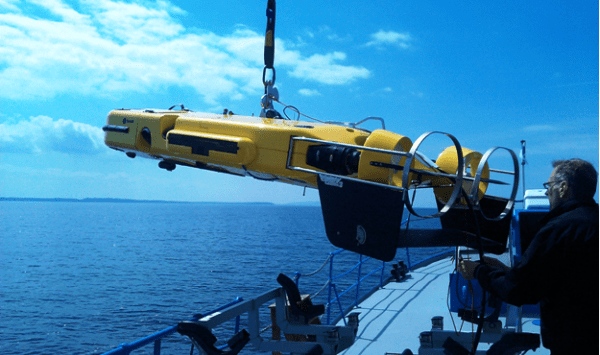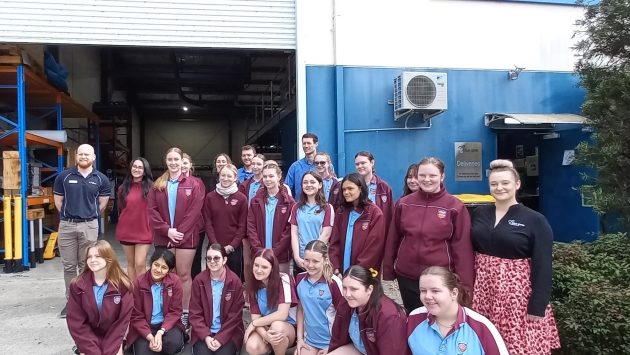Celebrating HMAS Gascoyne (II) Legacy
Marking the transition to a New Era in Australia’s Maritime Security
The HMAS Gascoyne (II) has made her final entry into Sydney Harbour in preparation for the decommissioning on Thursday 5th November 2024. The ceremony will be held at HMAS Waterhen in Sydney to celebrate over two decades of dedicated service to the Royal Australian Navy (RAN). Commanding Officer Gascoyne Lieutenant Lachlan Browne was joined on board by several former commanding officers of Gascoyne as the ship pulled alongside HMAS Waterhen flying its decommissioning pennant.
Commissioned on 2nd June 2001, HMAS Gascoyne (II) is the fourth of the six Huon Class Minehunter (MCH) vessels. Gascoyne is the second RAN ship to carry the name. HMAS Gascoyne (I) was Australia’s first River Class Anti-Submarine Frigate that served with distinction during World War II.
“HMAS Gascoyne (II) will decommission on Thursday 5 December 2024, following 23 years of faithful service”, according to a Defence spokesperson. “HMAS Gascoyne (II) made her final entry into Sydney Harbour on the 6th of November 2024”
“As she sailed through the harbour, she was met with a war farewell, reflecting appreciation for her longstanding role and many completed missions. The occasion was a tribute to HMAS Gascoyne’s legacy, marking the end of over two decades of dedicated service.”
HMAS Gascoyne (II) made the final journey home, travelling a total of 312,396 nautical miles covering the sea surrounding Tonga and Tuvalu to work alongside Australia’s Pacific partners. Commander of Mine Warfare, Diving and Geospatial Force Captain Richard Brickacek fondly remembers his time in command, sailing Gascoyne to Japan and South Korea for multinational exercises in 2016. At the time, this marked the furthest distance any mine hunter had sailed from Australia.
“There’s a heartfelt connection you feel when you’ve been part of [a] ship’s company,” Captain Brickacek said. “It’s sad to see her go after so many years of service, but there’s reassurance there that our people are already leading the way to maintain the Navy’s mine warfare skills at the waterfront”.
Earlier this year, the RAN decommissioned in May HMAS Anzac (III) and MHC HMAS Huon (II), followed by Hydrographic ship HMAS Melville in August, along with HMAS Maryborough (II) and HMAS Larraika (II) in September. The decommissioning of these long-standing ships opens the path towards Australia’s future surface fleet, featuring a new class of 7-11 general purpose frigates.
To date, BlueZone Group has supported Australia’s defence Mine Countermeasures (MCM) operations for over 20 years through the Saab Double Eagle Mine Disposal System (MDS) vehicles. Operated by the RAN since 1999, the Double Eagle MDS vehicles are operated from the Huon Class Minehunter Coastal ships and are maintained at BlueZone’s workshop facility in Newcastle, NSW. The Double Eagle MDS vehicles are currently the only remotely operated system able to operate in the harsh maritime regions surrounding Australia’s coastline.
The decommissioning of HMAS Gascoyne (II) marks the end of an era for the RAN, celebrating over 20 years of service. As the RAN transitions into a more advanced and capable surface fleet, the legacy of HMAS Gascoyne (II) and her sister ships will be remembered for their significant contributions to Australia’s maritime security. BlueZone Group are committed to enhancing the future of Australia’s undersea warfare capabilities, ensuring the fleet are equipped with the latest technology for maritime security. The future fleet promises enhanced capabilities to meet the evolving strategic demands, ensuring the safeguard of Australia’s waters and maintain robust maritime defence.
Read More:
Mine hunter HMAS Gascoyne II makes final visit before decommissioning – Defence Connect
HMAS Gascoyne home for the final time – CONTACT magazine
Decommissioning of HMAS Melville: A Legacy of Service and Exploration – BlueZone Group
BlueZone Group: Honouring the Legacy of HMAS Huon (II)
